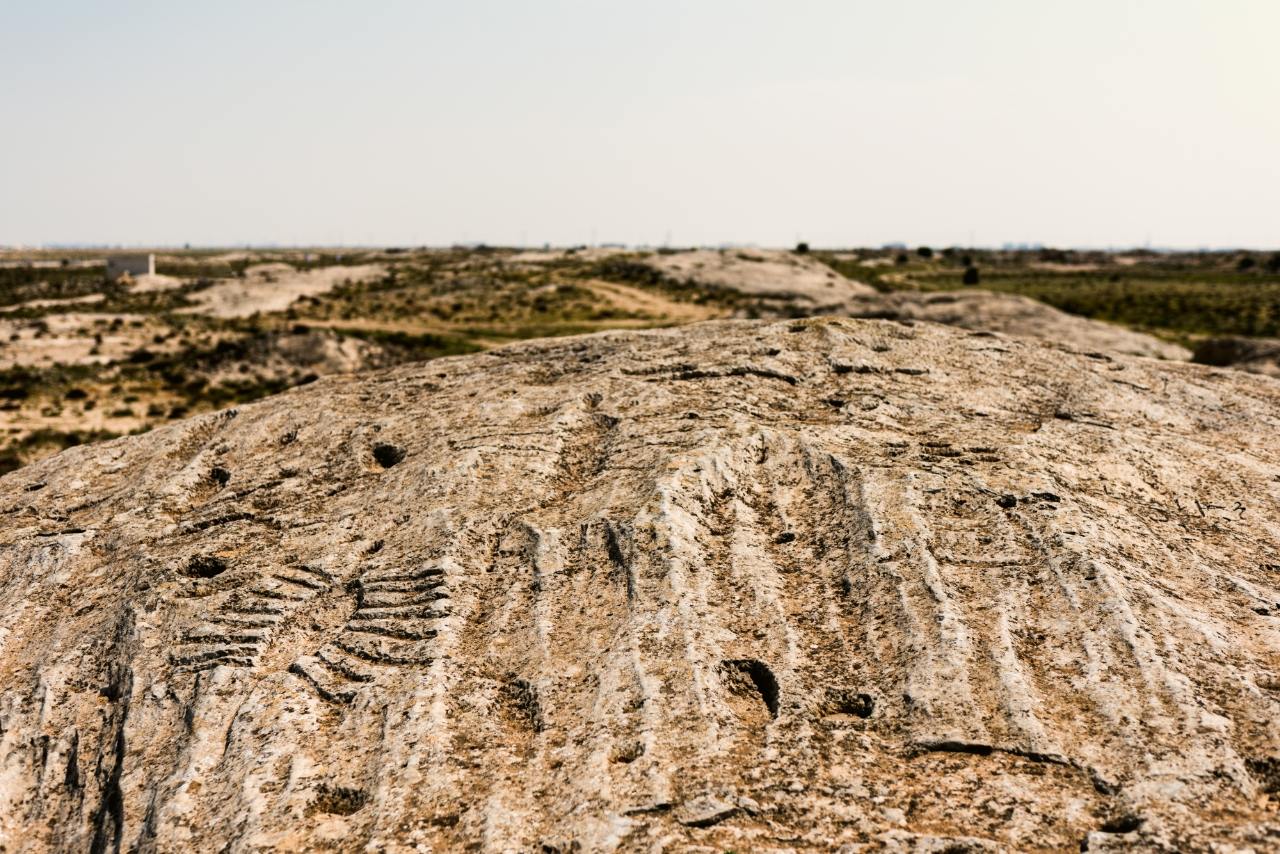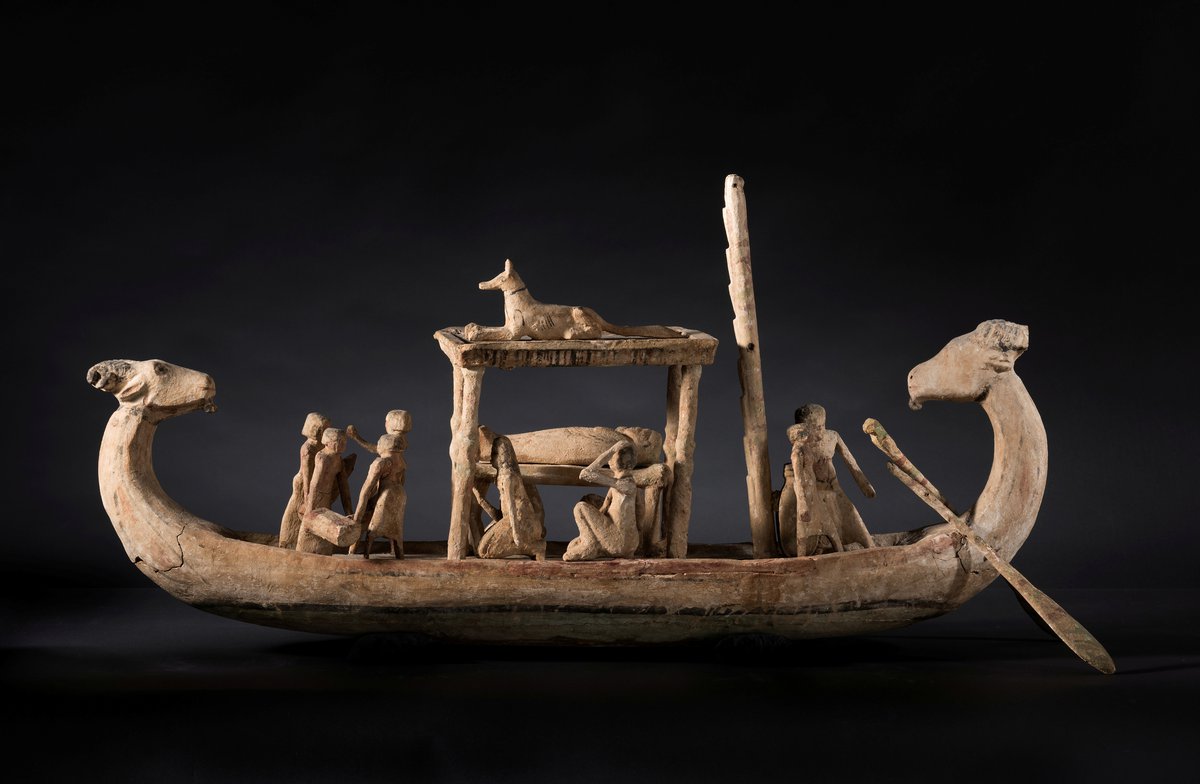Ancient rock engravings come out of a soft rock and look like reptiles basking in the sun, ancient board games, sailing ships seen from above, and numerous strange symbols and signs. Archaeologists have been intrigued by these symbols for decades.
n a desolate and windswept corner of Qatar’s northeastern coast, among the sand dunes of the barren desert, lies Al Jassasiya, the Gulf country’s largest and most important rock art site. However, it’s also home to some of the most mysterious symbols in the world.

From massive carvings in the soft rock to puzzling depressions that resemble ancient board games, these symbols have been a source of fascination for archaeologists and historians alike. What do they mean? How did they get there? These are just a few of the questions that surround this mysterious site.
In this region, people who lived centuries ago used a variety of low-lying outcrops of limestone as a canvas on which they carved various symbols, motifs, and objects that they observed in their surroundings.
Archaeologists discovered around 900 rock engravings, or “petroglyphs,” at Al Jassasiya. They are generally strange cup markings grouped in different patterns, such as rows and rosettes, but they also include eye-catching depictions of sailing ships, usually seen from above but sometimes in linear profile, among other symbols and signs.
Rock artworks are abundant on the Arabian Peninsula, according to archeologist Ferhan Sakal, the head of excavation and site management at Qatar Museums. However, some of the carvings at Al Jassasiya are one-of-a-kind and cannot be seen anywhere else, such as the petroglyphs depicting ships seen from a bird’s-eye view. These carvings show a remarkable level of creativity and observation on the part of the artisans who created them.
Cup marks

There are about 12 notable petroglyph sites in Qatar, located mostly along the country’s coasts – though some carvings can even be seen in the heart of Doha’s Al Bidda Par, overlooking the Corniche, a popular waterfront promenade. Al Jassasiya, about an hour north of Qatar’s uber-modern capital and near the old pearling port of Al Huwaila, was discovered in 1957.
A Danish team led by archaeologist Holger Kapel and his son Hans Kapel completed a six-week investigation in late 1973 and early 1974, methodically cataloging the whole site in pictures and sketches. More than a third of all reported single figures and compositions are cup markings in various combinations, forms, and sizes. So, what were they for, and what do they mean?
Experts believe they may have a ceremonial meaning and function that is so ancient that it cannot be explained ethnographically.
But how old is it? Petroglyphs, and rock art in general, are difficult to date. Several age hypotheses are spanning from the Neolithic to the late Islamic periods. However, scholars believe that not all of the carvings were created at the same time.
One scientific study of nine separate petroglyphs at Al Jassasiya a decade ago revealed no indication of them being older than a few hundred years, but the researchers concluded that additional research is needed, including the development of new techniques unique to limestone carvings.
While experts cannot determine for certain when or by whom the Al Jassasiya petroglyphs were produced, they all agree that the most intriguing – and odd – sculptures at the site are those of the boats.

These creations provide important information about the types of vessels used in the thriving fishing and pearling industries (for centuries, the mainstays of Qatar’s economy), as well as their various elements.
The majority of boats viewed from above are fish-shaped, with pointed sterns and rows of oars cut using a sharp metal tool. They have many characteristics, such as crossing ribs and holes that most likely reveal the location of masts and thwarts.
A lengthy line from the stern represents a rope that ends in either a traditional Arabic anchor (triangular stone anchor with two holes) or a European anchor (a metal anchor with a long shank and two curving arms, originally used in the region around seven centuries ago).
Journey to the afterlif

“On some of the boats the oars are not parallel, as they would have to be when used for rowing, but pointing in different locations,” Frances Gillespie an acknowledged expert on the archeology and natural history of Qatar and Faisal Abdulla Al-Naimi (head of the Department of Antiquities in Qatar) wrote in their book: Hidden in the Sands: Uncovering Qatar’s Past.
“This is how they would have looked when the boats were anchored out on the pearl banks and the oars were left in place for the divers to cling to and rest each time they came up.”
Experts say they can only speculate as to why there is such a high concentration of ship carvings at Al Jassasiya, compared to other coastal petroglyphic sites in Qatar. “Ships held a powerful role in the beliefs of ancient peoples, who saw them as a symbolic means of transit from this world to the next,” Gillespie and Al-Naimi noted.
“Both Babylonians and ancient Egyptians believed that the dead reached the afterworld upon a ship. Greek myths spoke of the ferryman Charon who carried the souls of the dead across the river Styx to the underworld. It may be that the oldest of the ship carvings are echoes of a folk memory reaching far back into pre-historic times.”
The history and meaning of these symbols remain unknown, but there is no denying the fascinating and enigmatic nature of these ancient carvings. We hope you enjoyed our article exploring the mysterious rock art at Al Jassasiya in Qatar.
As we continue to uncover and learn about the history of the world, sites like Al Jassasiya remind us that there is still so much we do not know about the past. The site is a fascinating glimpse into the past and continues to attract visitors from all over the world. If you ever find yourself in Qatar, this site is worth a visit.
Related Post
A shocking documentary proves that mermaids do exist
SHOCKING Revelation: Thuya, Mother of Queen Tiye, Was the Grandmother of Akhenaten and Tutankhamun—What Ancient Egyptian Secrets Did She Leave Behind?
Breaking News: Astonishing Discoveries at Karahan Tepe Confirm an Extraterrestrial Civilization is Hiding on Earth, and NO ONE Knows!
Breaking News: Researchers FINALLY Discover U.S. Navy Flight 19 After 75 Years Lost in the Bermuda Triangle!
NASA’s Secret Investigation: Uncovering the Astonishing Mystery of the UFO Crash on the Mountain!
Explosive UFO Docs LEAKED: Startling Proof That Aliens Ruled Ancient Egypt!